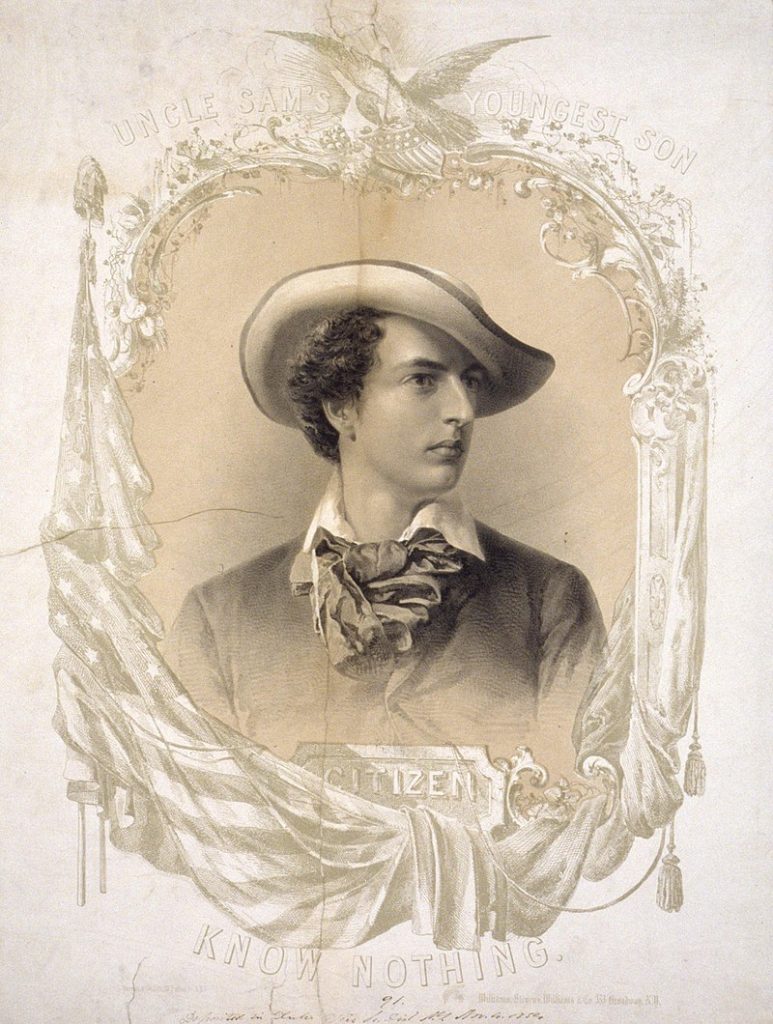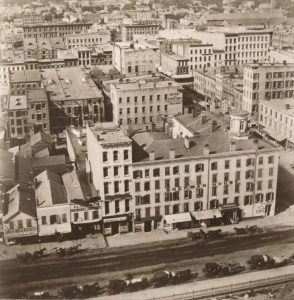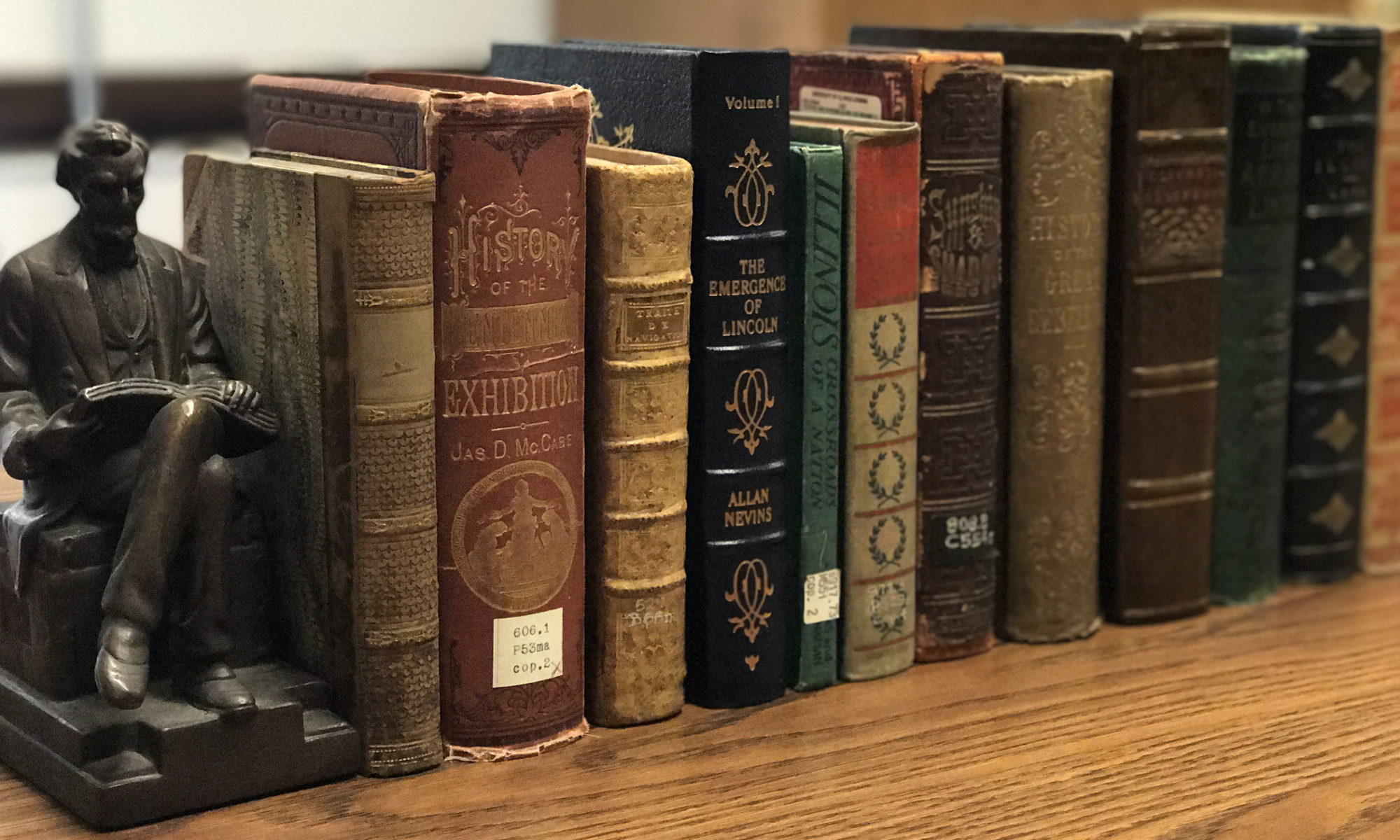Throughout the month of August, we are focusing our attention on immigration and the role immigrants have played in making Illinois what it is today. Follow along here on our blog and on our social media to learn about famous immigrants and immigrant experiences.
In the 1840s and 1850s, instability in Europe created a great influx of immigrants to the United States. Many of these immigrants came from Ireland and Germany, escaping poverty, famine, or political upheaval. From 1845 to 1853, nearly 3 million immigrants entered the United States, and many of them settled in large cities like Chicago.

For some Americans, these changes were unwelcome. Fearing the political and economic power of these large groups of foreign-born immigrants, a new political party began to rally, gaining power as the Whig party began to disintegrate. Originally a secret society, they were popularly called the “Know-Nothing” Party. They operated on an anti-foreigner, or nativist, platform that particularly targeted foreign-born Catholics, and many in their ranks also advocated for temperance and the prohibition of alcohol. These issues largely went hand in hand, as ethnic stereotypes portrayed German and Irish immigrants as heavy drinkers.
By the mid-1850s, the Know-Nothing Party’s power increased dramatically, as they elected governors, mayors, and more across the country. The same was true in Illinois, where Know-Nothing meeting houses (called lodges) emerged in most towns and cities, including Springfield and Quincy. Their most influential victories in Illinois came in Chicago, where they swept the municipal elections of 1855, electing members of their party to several key offices. This included a Know-Nothing mayor, Levi Boone, who had campaigned on anti-liquor and anti-Catholic nativist values.
However, the Know-Nothings’ power in Chicago would be short-lived. As Boone enacted policies that raised the prices of liquor licenses from $50 to $300 and ordered enforcement of a city ordinance that closed taverns on Sundays, he specifically targeted neighborhoods that were ethnically Irish and German. Rising tension over liquor-related arrests of immigrants came to a head in the Lager Beer Riot on April 21, 1855, when a court hearing attracted a number of Irish and German protesters. The protests turned violent, and one protester was confirmed dead by the end of the day, with several more injured severely in the clash.

Image courtesy of Chicago History Museum.
Backlash due to the riot and the Know-Nothing Party’s refusal to take a hard stance on the increasingly tense issue of slavery quickly destroyed the party’s power. The party’s declining powers were becoming especially apparent in Chicago. By the 1856 mayoral election period, association with the Know-Nothing Party was seen as a negative; each camp accused each other of having Know-Nothing credentials. Ultimately, Democratic nominee Thomas Dyer garnered support from the Germans, Scots, and Irish to win the 1856 election. This election marked a turning point in Chicago’s history, with an increase in immigrant voter turnout and the removal of the Know-Nothings from office. By 1860, the Know-Nothings had all but vanished from the political scene.
IHLC Resources:
Alexander, Erik B. “Temperance, Slavery, and Nativism: Chicago and the Origins of the Know-Nothing Party, 1850-1856.” Bachelor’s thesis, University of Illinois at Urbana Champaign, 2001.
Higham, John. Strangers in the Land: Patterns of American Nativism 1860-1925. New York: Atheneum, 1972.
Miller, Richard Lawrence.. Jefferson, NC: McFarland and Company, Inc., 2012.
Silverman, Jason M. Lincoln and the Immigrant. Carbondale, IL: Southern Illinois University Press, 2015.
Other Resources:
Boissoneault, Lorraine. “How the 19th-Century Know Nothing Party Reshaped American Politics.” Smithsonian.com. https://www.smithsonianmag.com/history/immigrants-conspiracies-and-secret-society-launched-american-nativism-180961915/
Einhorn, Robin. “Lager Beer Riot.” Encyclopedia of Chicago. http://www.encyclopedia.chicagohistory.org/pages/703.html
Grossman, Ron. “Chicago’s Lager Beer Riot proved immigrants’ power.” Chicago Tribune, September 25, 2015. http://www.chicagotribune.com/news/history/ct-know-nothing-party-lager-beer-riot-per-flashback-jm-20150925-story.html
